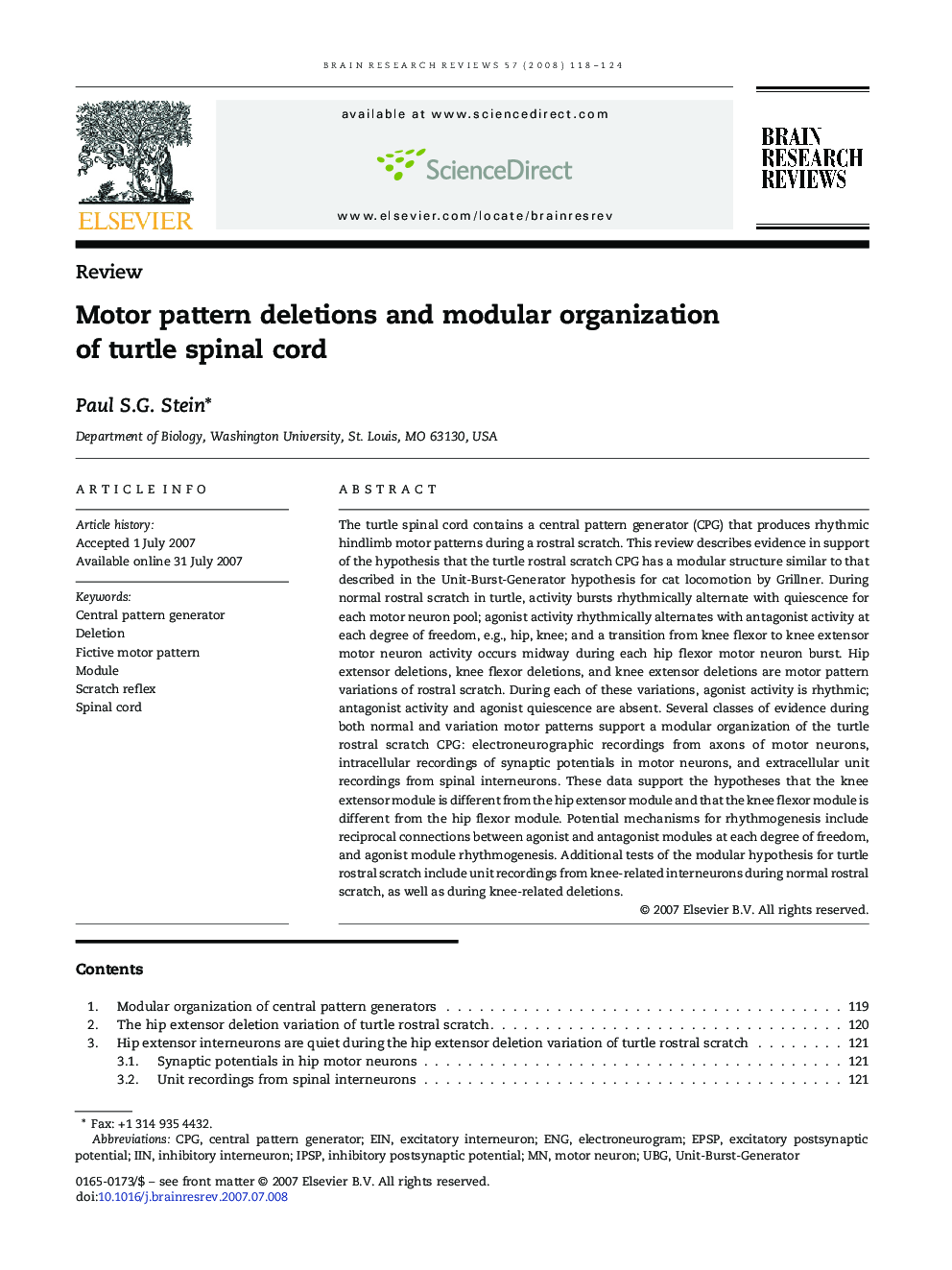| Article ID | Journal | Published Year | Pages | File Type |
|---|---|---|---|---|
| 4333924 | Brain Research Reviews | 2008 | 7 Pages |
The turtle spinal cord contains a central pattern generator (CPG) that produces rhythmic hindlimb motor patterns during a rostral scratch. This review describes evidence in support of the hypothesis that the turtle rostral scratch CPG has a modular structure similar to that described in the Unit-Burst-Generator hypothesis for cat locomotion by Grillner. During normal rostral scratch in turtle, activity bursts rhythmically alternate with quiescence for each motor neuron pool; agonist activity rhythmically alternates with antagonist activity at each degree of freedom, e.g., hip, knee; and a transition from knee flexor to knee extensor motor neuron activity occurs midway during each hip flexor motor neuron burst. Hip extensor deletions, knee flexor deletions, and knee extensor deletions are motor pattern variations of rostral scratch. During each of these variations, agonist activity is rhythmic; antagonist activity and agonist quiescence are absent. Several classes of evidence during both normal and variation motor patterns support a modular organization of the turtle rostral scratch CPG: electroneurographic recordings from axons of motor neurons, intracellular recordings of synaptic potentials in motor neurons, and extracellular unit recordings from spinal interneurons. These data support the hypotheses that the knee extensor module is different from the hip extensor module and that the knee flexor module is different from the hip flexor module. Potential mechanisms for rhythmogenesis include reciprocal connections between agonist and antagonist modules at each degree of freedom, and agonist module rhythmogenesis. Additional tests of the modular hypothesis for turtle rostral scratch include unit recordings from knee-related interneurons during normal rostral scratch, as well as during knee-related deletions.
